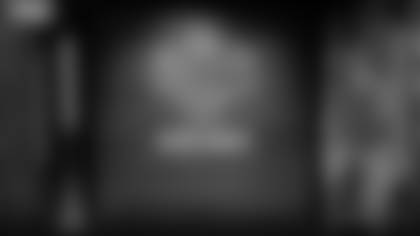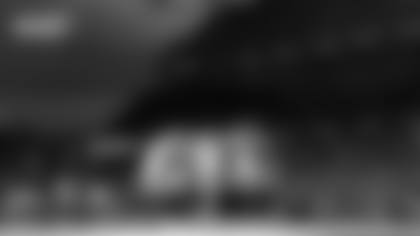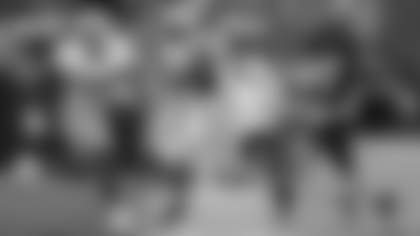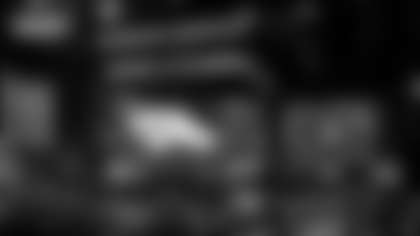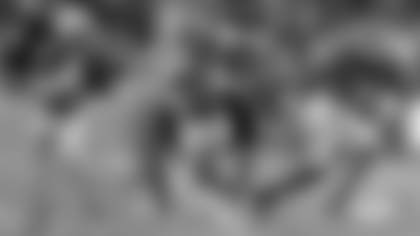ENGLEWOOD, Colo. --The Chargers needed a bit of luck to get what they truly needed out of the draft, and it didn't happen.
San Diego's dream scenario would have involved finding a long term left tackle of the future at the top of its draft class – and for a while, it seemed like one of the top three tackles, most likely Oklahoma's Lane Johnson, could have slipped to No. 11, or been within range of a trade-up at a reasonable cost.
But the early run on offensive tackles made that an impossibility, and Johnson was gone at the fourth pick. At that point, the Chargers still seemed in position to draft one of the top two guards; unfortunately for them, North Carolina's Jonathan Cooper and Alabama's Chance Warmack went off the board in the three picks preceding theirs.
Offensive tackle D.J. Fluker at least allowed them to address one offensive-line slot. Failing to emerge from the draft with at least one starting offensive lineman on a group that will turn over 80 percent of its starters (all but center Nick Hardwick) would have made San Diego's draft a failure.
However, it seems unlikely that Fluker will develop into a left tackle – which, ideally, is what you'd want from a tackle taken in the first 15 picks -- and his struggles against Broncos fifth-round pick Quanterus Smith last season show that he has some work to do against speedy edge rushers. The Smith-Fluker duel is likely to be repeated many times in the coming years, so we'll have a good measuring stick for the progress of both.
Fluker might have been a better value a few picks later, but he should at least become a solid starter on the right flank. Left tackle will remain a long-term need. The Chargers reportedly met with Bryant McKinnie this week, but he would be a short-term fix. It would be no surprise if they target left tackle in next year's first round.
Linebacker Manti Te'o (No. 38 overall) was a solid pick in the second round. In a 3-4 defense, Te'o has a better chance to be an every-down linebacker than he would in the 4-3, so the Chargers have a better chance of getting proper value from the slot. But those who compare Te'o's potential impact to that of the late Junior Seau – including ESPN's Mel Kiper – are way off base. They're not the same kind of linebacker; for instance, Te'o won't be in Seau's class as a blitzer. Such a comparison is unfair to Te'o, who's got enough on his plate as it is.
Fluker and Te'o should start immediately. The same could be true of third-round wide receiver Keenan Allen (No. 76 overall), who I thought was the best pick in their draft, having dropped because of injury concerns.
In looking at Allen, it's also worth noting the pick immediately ahead of him: offensive tackle Terron Armstead, who went to the Saints. Armstead is raw, but a phenomenal athlete who had great Combine numbers, but also looked comfortable at left tackle during practice before the postseason all-star games. Had the Saints passed on Armstead, the Chargers might have been in a conundrum: pick a prime potential target for Rivers, or add Armstead, who could provide first-round value at a premium position if he develops properly.
Allen has late first-round talent and size but dropped into the third round because of concerns about his knee that affected his 40-yard dash time at his pro day (a pedestrian 4.71 seconds). If Allen heals, the Chargers have an immediate upgrade for a receiving corps that was bled dry of talent in recent years.
San Diego opened the third day with fifth-round cornerback Steve Williams (No. 145). Williams has some of the same attributes of Kayvon Webster – particularly speed (4.42 seconds, one-one-hundredth of a second slower than Webster). But Webster is 14 pounds heavier, an inch taller and much more aggressive against the run and blitzing from the corner; that's why he's a third-rounder and Williams was taken two rounds later. Williams looks like a potential nickel back.
Sixth-rounder Tourek Williams of Florida International (No. 179 overall) projects as an outside linebacker in San Diego's 3-4 alignment. The 260-pound Williams was the other defensive end on the All-Sun Belt first-team opposite Quanterus Smith, but will make his money as more of an all-around player, as he isn't in Smith's class as a pass rusher.
The Chargers' last pick, Southern Utah quarterback Brad Sorensen (No. 221) is one of the oldest rookies; he's 25, having taken a Latter Day-Saints mission in recent years. His size (6-foot-5) and arm strengths are attributes, but 10 interceptions at a relatively low level (FCS, Big Sky) calls into question accuracy and decision-making. He's strictly a developmental prospect.
It's important to remember that in spite of the Chargers' myriad ills, they still managed to go 7-9 and dominated the Broncos for 30 minutes in October. This was -- and remains -- a team capable of putting together stretches of elite football. The outlook isn't bleak, and if Fluker and a retooled offensive line can do a better job of keeping Rivers upright, new Head Coach Mike McCoy could have them in playoff contention once again.
But the overall foundation of the roster still needs work. One draft wasn't going to fix it. Even if the Chargers can mask enough deficiencies to push toward nine or 10 wins, there's plenty of rebuilding in front of them.


